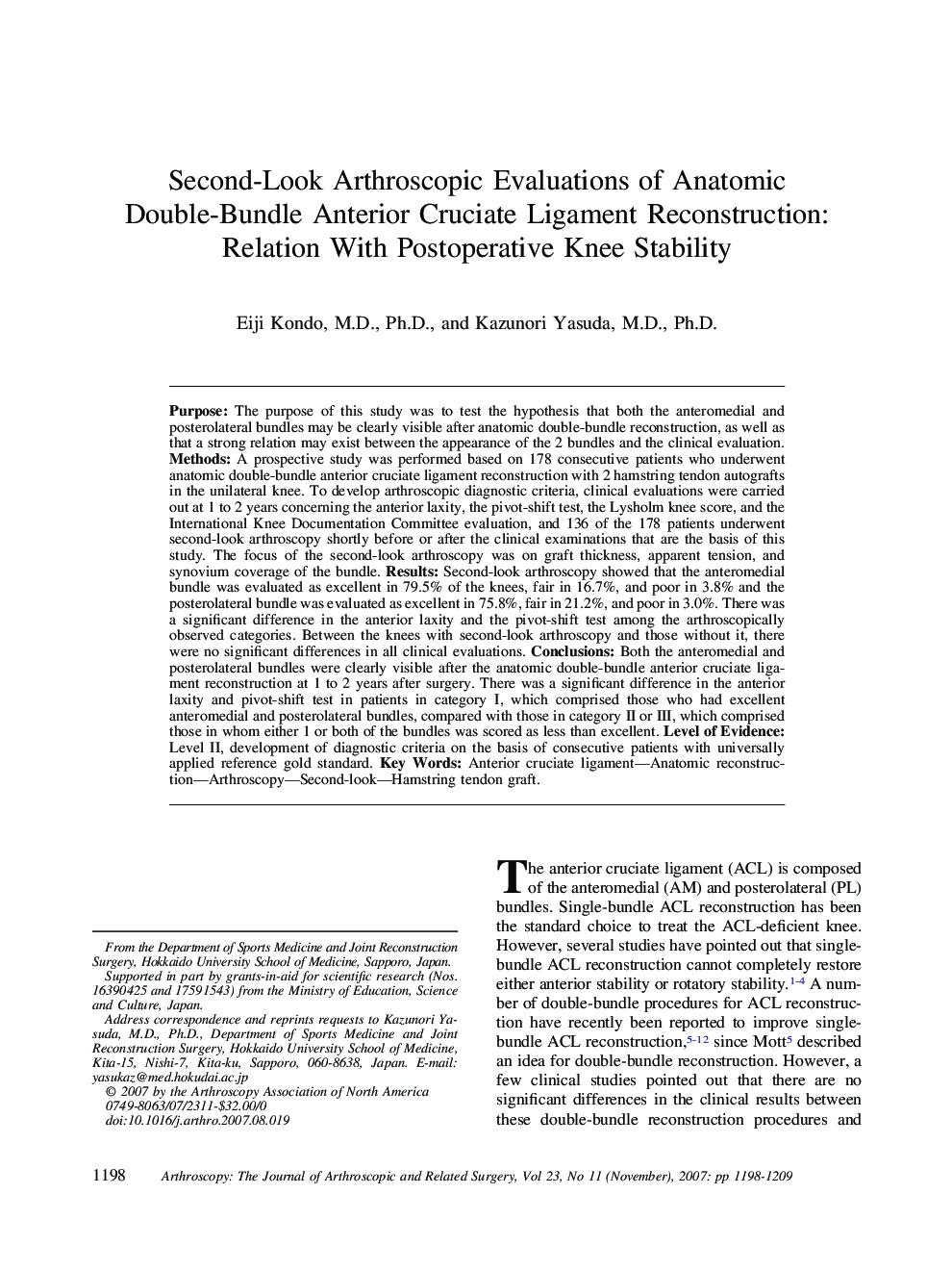| Article ID | Journal | Published Year | Pages | File Type |
|---|---|---|---|---|
| 4047430 | Arthroscopy: The Journal of Arthroscopic & Related Surgery | 2007 | 12 Pages |
Purpose: The purpose of this study was to test the hypothesis that both the anteromedial and posterolateral bundles may be clearly visible after anatomic double-bundle reconstruction, as well as that a strong relation may exist between the appearance of the 2 bundles and the clinical evaluation. Methods: A prospective study was performed based on 178 consecutive patients who underwent anatomic double-bundle anterior cruciate ligament reconstruction with 2 hamstring tendon autografts in the unilateral knee. To develop arthroscopic diagnostic criteria, clinical evaluations were carried out at 1 to 2 years concerning the anterior laxity, the pivot-shift test, the Lysholm knee score, and the International Knee Documentation Committee evaluation, and 136 of the 178 patients underwent second-look arthroscopy shortly before or after the clinical examinations that are the basis of this study. The focus of the second-look arthroscopy was on graft thickness, apparent tension, and synovium coverage of the bundle. Results: Second-look arthroscopy showed that the anteromedial bundle was evaluated as excellent in 79.5% of the knees, fair in 16.7%, and poor in 3.8% and the posterolateral bundle was evaluated as excellent in 75.8%, fair in 21.2%, and poor in 3.0%. There was a significant difference in the anterior laxity and the pivot-shift test among the arthroscopically observed categories. Between the knees with second-look arthroscopy and those without it, there were no significant differences in all clinical evaluations. Conclusions: Both the anteromedial and posterolateral bundles were clearly visible after the anatomic double-bundle anterior cruciate ligament reconstruction at 1 to 2 years after surgery. There was a significant difference in the anterior laxity and pivot-shift test in patients in category I, which comprised those who had excellent anteromedial and posterolateral bundles, compared with those in category II or III, which comprised those in whom either 1 or both of the bundles was scored as less than excellent. Level of Evidence: Level II, development of diagnostic criteria on the basis of consecutive patients with universally applied reference gold standard.
